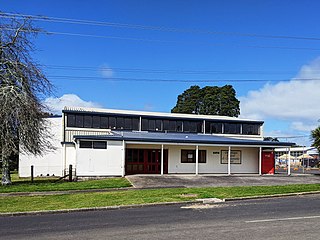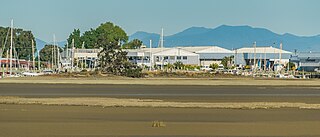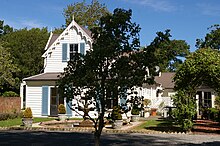
Oropi is a rural settlement located in the Bay of Plenty region of the North Island of New Zealand. It is located 20 kilometres south of Tauranga and 43 kilometres north of Rotorua. It has been suggested that the word Oropi is the Māori language equivalent of Europe. This is derived from the 1860s when government forces were based in the area at the time of the Battle of Gate Pā.
Kaharoa is a rural area of New Zealand approximately 20 km from Rotorua and 45 km from Tauranga on the North Island. At its highest point the area is approx. 500m above sea level, with some areas able to see towards the coastline of the eastern Bay of Plenty.
Kaingaroa is a locality in the Far North District of New Zealand. It lies on State Highway 10 north-east of Awanui and Kaitaia, and south-west of Karikari Peninsula.
Pamapuria is a locality in Northland, New Zealand. It lies on State Highway 1 about 10 km east of Kaitaia.
Waikare is a locality in Northland, New Zealand. The Waikare River flows from the Russell Forest past Waikare and into the Waikare Inlet, which leads into the Bay of Islands.
Waiharara is a community at the base of the Aupouri Peninsula in Northland, New Zealand. State Highway 1 runs through the community. To the west is Aupouri Forest, and beyond that Ninety Mile Beach. To the east is Rangaunu Harbour. Houhora is 22 km north west, and Awanui is 16 km south east. Lake Waiparera, 35 metres above sea level, is immediately to the north west.
Karetu is a community in the Northland Region of the North Island of New Zealand. Kawakawa is to the west, and Waikare is northeast. The Karetu River flows from the Russell Forest in the southeast through Karetu, and joins the Kawakawa River shortly before it flows into the Bay of Islands.
Motatau or Mōtatau is a locality in the Northland Region of the North Island of New Zealand. Maromaku is to the east. The Taikirau Stream flows from east through Motatau and then runs northwest to join the Waiharakeke Stream. The North Auckland Line runs through Motatau.
Rawhitiroa is a locality in South Taranaki, New Zealand. It is approximately 6.5 km east of Eltham.

Wainui Beach is a small settlement on the coast of New Zealand's North Island, located just to the north of Tuaheni Point, some 8 km to the east of Gisborne, to which it is linked by State Highway 35.

Onewhero is a village and rural community in the Waikato District and Waikato region of New Zealand's North Island.
Paparore is a small coastal settlement near the north of Waipapakauri, adjacent to Rangaunu Harbour. It has a marae and cemetery.
Mandeville North is a small village in the Waimakariri District of Canterbury, New Zealand. Due to new subdivisions being built in the area, the population has been slowly increasing, particularly after the 2011 Christchurch earthquake. The construction of the Mandeville village retail development began in late 2017 and was completed in early 2018.
Oruanui is a rural community in the Taupō District and Waikato region of New Zealand's North Island, located northwest of Wairakei on State Highway 1.
Waikeria is a rural community in the Otorohanga District and Waikato region of New Zealand's North Island.
Hexton is a village and rural area in the Gisborne District of New Zealand's North Island. It is located north-west of Gisborne City, and includes the settlements of Makauri and Waerengaahika.
Marotiri is a rural community in the Taupō District and Waikato region of New Zealand's North Island. State Highway 32 runs through it.

Waitakaruru is a rural community in the Hauraki District and Waikato region of New Zealand's North Island. It is situated at the mouth of Waitakaruru River

Ngakuru is a rural community in Rotorua Lakes District within the Waikato region of New Zealand's North Island.

Lower Moutere is a settlement in the Tasman District of New Zealand's upper South Island. It is a farming community it the Lower Moutere valley, 6 km (3.7 mi) from Motueka close to the Moutere Inlet.








